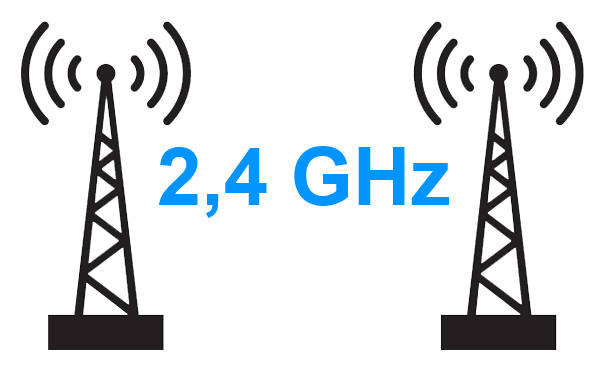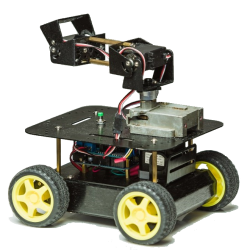Radio communication 2.4 GHz
В данной категории пока ничего нет

When using any radio communications, there are certain restrictions on the radio frequency ranges used so as not to cause interference to other users. And the 2.4 GHz frequency is one of the best options for organizing radio communications. On the one hand, this frequency does not require special permissions for its use. At the same time, we can organize a fairly wide data transmission channel - up to 2 Mbit over fairly long distances. Within line of sight - up to 100-200 meters, in the presence of obstacles - 10-50 meters. In fact, for short distances, the 2.4 GHz frequency will be optimal in terms of speed, range and required signal power
The 2.4 GHz band is also used by the common Wi-Fi communication protocol, so if there are a large number of networks (for example, in an apartment building), it can interfere with communication. On the other hand, the 2.4 GHz radio signal fades quite quickly after passing through obstacles - two or three walls are enough to reduce or completely eliminate the influence of other connections.
If we want to use standard modules for 2.4 GHz radio communications, then we will need a pair of receiver and transmitter configured to communicate with each other. Connection to the controller via a standard protocol using SPI (the most common) or i2c inputs. The most common modules (for example NRF24L01) do not require additional antennas (the antenna is on the module board itself) and have fairly low power consumption. This allows them to be used, for example, for wireless control of a mobile device that is powered by batteries or rechargeable batteries. Moreover, the channel width (up to 2MB) makes it possible not only to transmit simple control commands, but also to receive telemetry in real time and even transmit media content (for example, video of not very high resolution)
Systems using 2.4 GHz radio modules are quite convenient and have a greater control range than using Bluetooth. The need for a separate transmitter module provides less flexibility, but allows you to make a simple wireless control panel (for example, gates or smart home functions) that will operate within an apartment or private house, while unauthorized connection will be difficult due to the need to synchronize the parameters of the receiver and transmitter.

 Books
Books Technology
Technology Electronics
Electronics DC motors
DC motors Raspberry Pi Controllers
Raspberry Pi Controllers Relay
Relay Temperature sensors
Temperature sensors Analog sensors
Analog sensors Digital sensors
Digital sensors ADC
ADC Bluetooth
Bluetooth Radio communication 2.4 GHz
Radio communication 2.4 GHz LCD-screen
LCD-screen All tags
All tags Programming
Programming Weaponry
Weaponry Projects
Projects